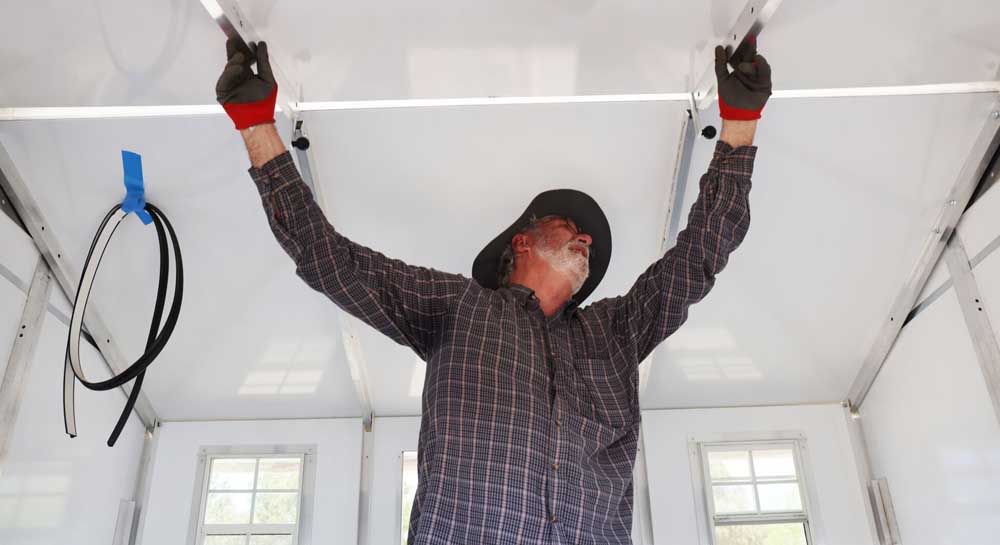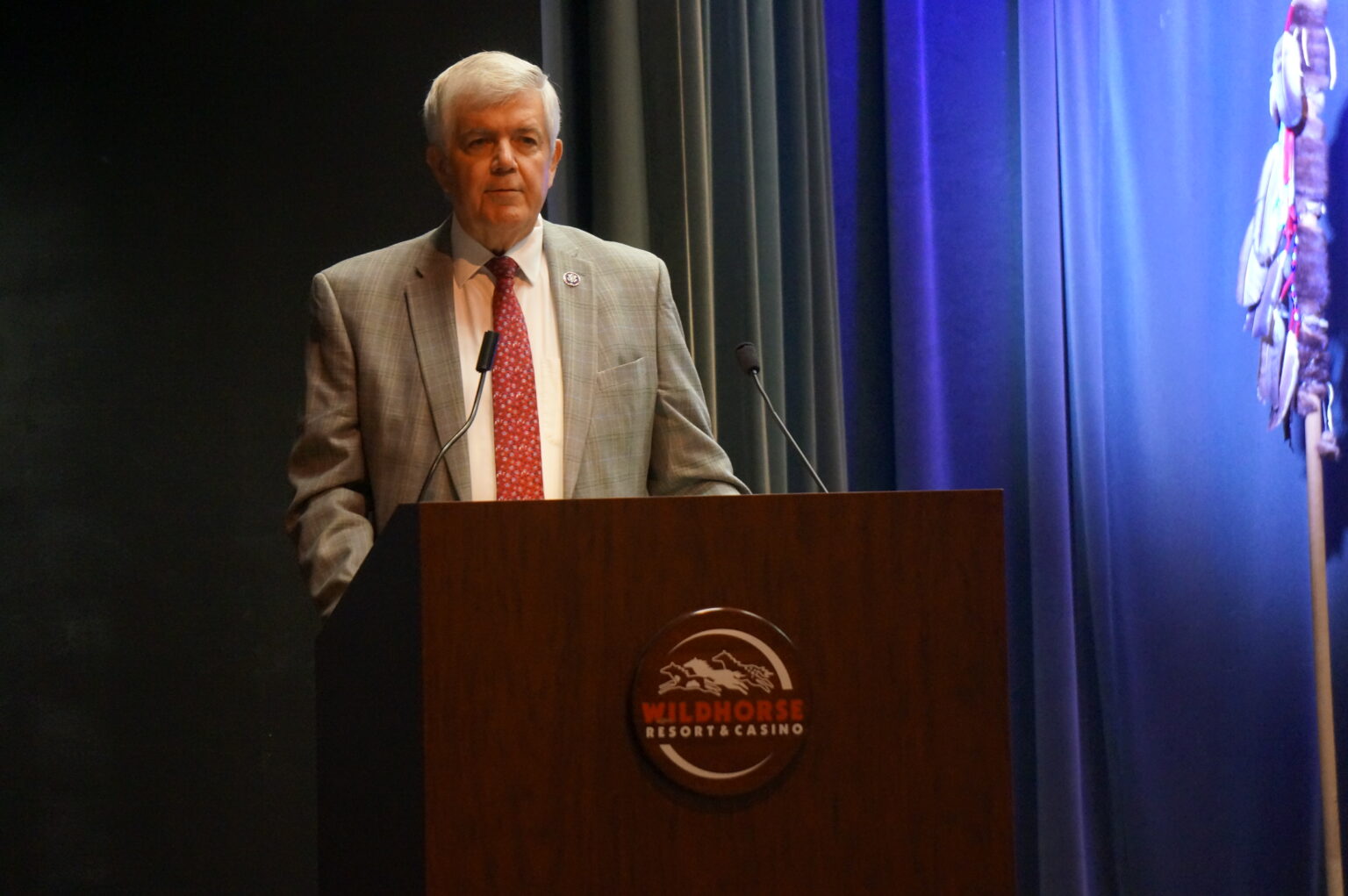To help solve homelessness, Central Oregon Villages thinks big with tiny homes
Published 5:45 am Thursday, May 18, 2023

- Volunteer Tom Machala aligns a roof panel in one of Central Oregon Villages’ pallet shelters. The shelters are roughly the size of a garden shed and will be located on church property near 27th Street and Bear Creek Road in Bend.
BEND — Central Oregon Villages is approaching homelessness differently. Instead of large homeless shelters where everyone gathers in a single place, the local nonprofit organization is building individual units in east Bend that are roughly the size of a garden shed.
Trending
They may be small, what some call tiny homes, but they’re still home.
The intention is to provide accountability and opportunity for people who are homeless and unsheltered in Central Oregon.
The nonprofit’s vision is already taking shape, as volunteers and construction workers toiled under a glaring sun May16 to build the first of 20 Pallet shelters on church property near 27th Street and Bear Creek Road.
Trending
“This absolutely has to be a hand up and not a handout,” said Jim Porter, president of the nonprofit’s board and former Bend police chief.
Five of those easy-to-build shelters, which are a quick and temporary solution to homelessness, are expected to become home for four women and one family with children by the end of May. Most of them are currently living unsheltered. Pallet shelters promise construction time of less than an hour, and each unit costs several thousand dollars. In October, the Bend City Council unanimously approved a three-year contract with Central Oregon Villages with $1.45 million in American Rescue Plan Act funds to assist operations.
Entry for older women and families with children who are homeless will be the first priority, but the shelters will be open to individuals who pass a criminal background check, abstain from drugs and alcohol and participate in a case management program with the nonprofit.
The need in Central Oregon is undeniable. Homelessness in the region is rising. Between 2022 and 2023, homelessness increased by 28%, bringing the total number of people experiencing homelessness in Central Oregon to 1,647.
Central Oregon Villages looked to SquareOne Villages, a Eugene-based nonprofit, for inspiration. SquareOne has more than a decade of experience successfully transitioning people from their temporary shelter village, which is comprised of tiny homes, to more permanent housing.
Last year, 77% of people who worked with SquareOne were able to move into more permanent housing, said Dan Bryant, its executive director.
A major key to the success of SquareOne’s village, which was established in 2013, was having a gated community and empowering residents to take charge of their own lives by giving them responsibility, Bryant said. However, it’s not for everyone, he said. Some people need more structure than others, but SquareOne has been able to prioritize dignity and safety while decreasing peoples’ risk of being victims or perpetrators of crime. In turn, hospitals and police save time and money, he said.
“It’s a huge improvement for their own mental and even physical health to be able to have that kind of security of a safe place to sleep,” he said.
Over time, the village in Eugene was able to earn a 90% approval rating from neighbors, based on a University of Oregon survey, Bryant said.
In Bend, Central Oregon Villages initially faced staunch opposition from a few neighbors last year. Some said they feared their property would lose value, and others simply didn’t want a homeless shelter near their neighborhood.
Central Oregon Villages said it conducted a comprehensive community engagement to ensure neighbors could feel safe. That push ultimately resulted in the nonprofit building a higher, more visually appealing fence around the property at 27th Street and Bear Creek Road and bolstering security measures.
The gate into the property will be monitored 24/7, and shelter residents must comply with a community standards agreement, said Nicky Merritt, the executive director of Central Oregon Villages. Violations of the agreement are evaluated on a case-by-case basis, Merritt said. More severe violations, like violence, could result in immediate removal, she said, but less severe violations will be accounted for in a three-strike system.
“There is a great need for more options like this,” Merritt said. “We’re hoping this is a stepping stone to the next thing: stable, long-term housing. It’s not meant to be a forever place, but it is meant to be a place where they can feel safe and they don’t have to worry about moving every 72 hours.”
Central Oregon Villages began interviewing candidates earlier in May.
“I think through our interviews that we’ve done the last two weeks, there are some real life circumstances that could happen to any of us,” Merritt said. “A death of a spouse, being hit by a car, no medical insurance, not being able to work through being in a coma for three months.”
Merritt said the organization plans to phase people into the shelters in groups of five to allow people to get acclimated. The village of shelters is expected to be full near the end of August.









